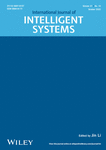Tracing the spatial-temporal evolution dynamics of air traffic systems using graph theories
Abstract
Air traffic systems are of great significance to our society. However, air traffic systems are extremely complicated since an air traffic system encompasses many components which could evolve over time. It is therefore challenging to analyze the evolution dynamics of air traffic systems. In this paper we propose a graph perspective to trace the spatial-temporal evolutions of air traffic systems. Different to existing studies which are model-driven and only focus on certain properties of an air traffic system, in this paper we propose a data-driven perspective and analyze a couple of properties of an air traffic system. Specifically, we model air traffic systems with both unweighted and weighted graphs with respect to real-world traffic data. We then analyze the evolution dynamics of the constructed graphs in terms of nodal degrees, degree distributions, traffic delays, causality between graph structures and traffic delays, and system resilience under airport failures. To validate the effectiveness of the proposed approach, a case study on the American air traffic systems with respect to 12-month traffic data is carried out. It is found that the structures and traffic mobilities of the American air traffic systems do not evolve significantly over time, which leads to the stable distributions of the traffic delays as evidenced by a causality analysis. It is further found that the American air traffic systems are quite robust to random airport failures while, respectively, 20% and 10% failures of the hub airports will lead to the collapse of the entire system with respect to the two proposed cascading failure models.
Open Research
DATA AVAILABILITY STATEMENT
The data that support the findings of this study are available from the corresponding author upon reasonable request.




